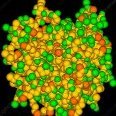Doctor shares tips for your kidneys health
-
Recently Browsing 0 members
- No registered users viewing this page.
-
Topics
-
Popular Contributors
-
Latest posts...
-
17
MAGA Goes Beserk After Trump’s FBI Bosses Say Epstein Killed Himself
I'm sure you can back up your claim that there were "FEDS in the crowd egging things on", right? Right? -
7
Due to AI: Now is the best time to be alive? But not 10 years from now?
In 1933 we had real intelligence, not artificial. Golf? Why spoil a good walk? Thanks for your good wishes. -
105
How did your dad influence your life
Best of luck. Whataburgers are tasty. -
24
Do you still read books?
You're a weirdo. Discuss the topic or piss off loser. -
15
Maga-style parties given bloody nose in European elections
The average maga, doesn't care about Europe. -
0
Report Vietnam’s Quality of Life Ranking Falls, Yet Stays Notable in Affordability
File photo for reference only Vietnam has dropped two places in the 2024 Quality of Life rankings by U.S. News & World Report, now positioned at 38th out of 89 countries evaluated. This annual ranking considers nine factors deemed essential to quality of life, including affordability, job market, economic stability, and public systems in education and health. In the latest report, Vietnam—home to 98.9 million people with a GDP per capita of US$15,194—excelled in affordability, scoring an impressive 99.2 out of 100. However, its scores for "family friendly" and "a good job market" were lower, at 24.8 and 23.1, respectively. The country's scores for other criteria, including public education and health systems, were critical, with the lowest ratings at 4.1 and 2.1. Among Asia's 16 ranked countries, Vietnam placed seventh, trailing behind Japan, Singapore, South Korea, China, Malaysia, and Thailand. Globally, Denmark topped the list for quality of life, followed by Sweden and Switzerland. Despite the dip in quality of life ranking, Vietnam maintains its place at 44th in the Best Countries Overall Rankings for 2024, consistent with its 2023 position. These rankings emerged from a survey conducted among nearly 17,000 people worldwide between March 22 and May 23, 2024. The project was a collaborative effort by U.S. News & World Report, WPP, and the Wharton School of the University of Pennsylvania. Vietnam's densely populated and rapidly developing urban centers, such as Ho Chi Minh City, house about a third of its population. Known for its breathtaking landscapes and rich cultural heritage, Vietnam has been making efforts to decrease its international isolation. It joined the World Trade Organization in 2007 and entered Trans-Pacific Partnership negotiations in 2010. Additionally, the country is an active member of international organizations like the United Nations, ASEAN Regional Forum, and Asia-Pacific Economic Cooperation. Despite challenges in public systems, Vietnam continues to gain global recognition, particularly for its cuisine and as a tourist destination, reflecting its dynamic development and growing international integration. Adapted by ASEAN Now from VN Express 2025-05-20
-
-
Popular in The Pub
-






.thumb.jpeg.d2d19a66404642fd9ff62d6262fd153e.jpeg)
.thumb.jpg.bc523c85a8d558dbc282dca7a2e602c9.jpg)
Recommended Posts
Create an account or sign in to comment
You need to be a member in order to leave a comment
Create an account
Sign up for a new account in our community. It's easy!
Register a new accountSign in
Already have an account? Sign in here.
Sign In Now